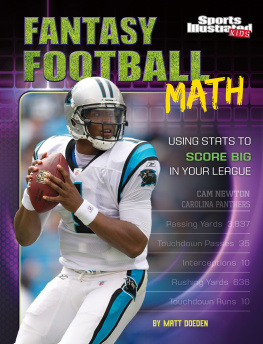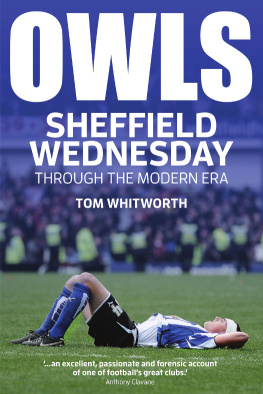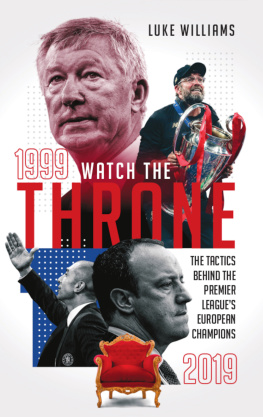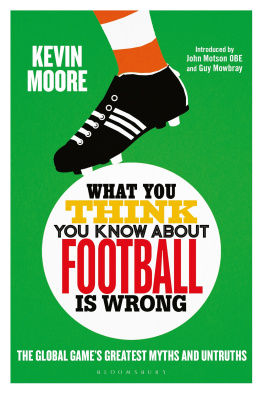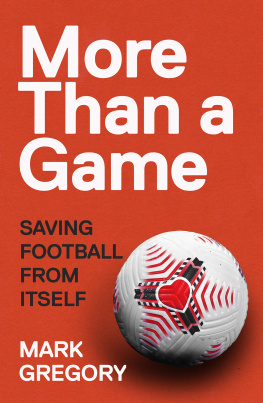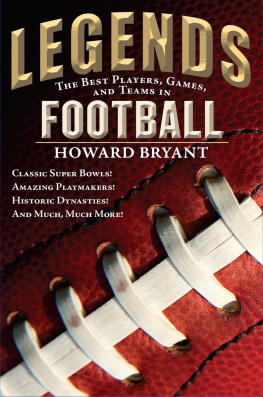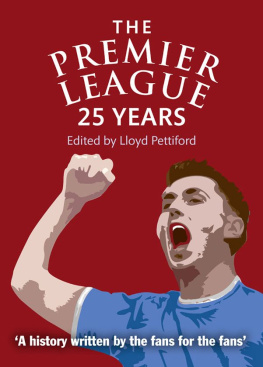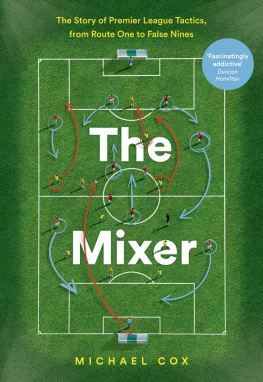
To Issie and Livi:
Keep your eyes on the stars
and your feet on the ground


Contents

This whole book adventure would have never begun without my wife Hollie. She prods, cajoles, challenges me and reins me in. She has planned, brainstormed, proof-read, amended and lived and breathed this book with me. It got in the way of holidays, weekends, family time and date nights. This book is as much hers as it is mine.
To my parents, David and Lillian, Im the midway point of you both. Mum the international tennis player and Dad the criminal lawyer. The Courts are the focal point for you both. Its little surprise Im a sports lawyer. Sport and hard work were the glue of our family. Thank you both for your unwavering love and confidence in me. Your positivity knows no bounds.
To my brother Matthew, thank you for your spreadsheets, and Hilla for your incredible design input.
To the Phillips and Geey families, this book is really a homage to every lunch, dinner, kick-about and trip to Anfield. The constant debate and laughter about football laid the foundations for me to write this book.
To the Springers, my incredible extended family, thank you for looking after Hollie, particularly on the holidays that I was half-buried in my laptop.
A huge thanks to Neil Swimer, Anne Geey, Robin Phillips, Rabbi Liss, Mike OBrien, Jake Cohen, John Sinnott, Trevor Rack, Adam Lovatt and Ehsen Shah for reading the book at different stages and offering their constructive thoughts. To Tony Evans for his guidance throughout. To Jake Cooper for endless fascinating chats on the future of broadcasting, how content is being consumed by millennials and the exponential rise of social media.
To my A-level economics tutor Ratesh Dhir, who didnt immediately laugh at my idea to write a book on football after discussing the unusual supply and demand curves for player transfers. To my Masters tutor, Mark James, who in 2003 encouraged me to write my first two journal articles on multiple club ownership and Premier League broadcasting rights. Those articles became the foundation for my future blogs. To my literary agent David Luxton, your powers of publisher persuasion know no bounds and I will always be grateful for your determination and energy to get this project off the ground. As importantly, Matt Lowing and Zo Blanc at Bloomsbury Sport. Your incredible input from start to finish has improved the book immeasurably.
To Charles, John, Nick and Kerry for putting up with my illusions of actually wanting to become a sports lawyer one day. To the incredible Sports team at Sheridans: Andrew, Chris, Jonny, Katherine, Nic, Sarah and Reyna, Im grateful to be working with such talented teammates and friends.
I signed my first professional football contract in 1980. I was 16, the club was Cremonese and the only advice I received was from the AIC, the Italian version of the Professional Footballers Association. In those days, football was a self-sustaining ecosystem: the money stayed within the game, and there was no involvement from lawyers, banks or agencies even agents were rare. Over a decade later, in 1992, I signed for Juventus from Sampdoria. Again, there was no agent and no lawyer: Paolo Mantovani, Sampdorias president, asked what was important to me and then negotiated directly with Juventus on my behalf, securing the contract that would see me leave his club.
Around the mid-1990s, Englands Premier League was breaking new ground: football was being packaged into a premium media product and sold globally. Money started flowing into the game. Many of my peers took on agents and lawyers to negotiate commercial deals and transfers on their behalf. For my final transfer as a player, to Chelsea in 1996, I took on my first agent. It was a huge learning curve for all of us as players, and we had to start thinking about ourselves in an entirely different way as brands, media products, commodities to be bought and sold.
Over 20 years on, the football world is unrecognisable. The revenues from broadcasting rights have brought more money into the game than ever before, driving transfer prices, player salaries, sponsorship deals and commercial revenues to new levels. In this new world, it would be unimaginable for a young footballer to sign a contract at a new club or their current one without the help of their managers, agents, lawyers, and possibly a marketing/PR or image rights representative. Even more unthinkable would be a 28-year-old striker, with 59 caps for his country, trusting his club president to negotiate his terms with a buying club.
At the top levels of todays game, agents, lawyers, banks, marketing and PR agencies have all carved out considerable influence. The introduction of these industries and their ways of working have largely benefitted the sport and the players: standards have risen in terms of financial rigour, commercial best practice and legal protection for athletes with very short careers. That having been said, no transfer window goes by without a few sensational stories in the press about who really benefits from the mind-blowing sums of money involved raising the question of what is going on behind closed doors and whether its all above board.
I first met Daniel through a mutual friend, when he asked if I would be interested in getting involved in Football Aid, the charity he supports. Since then, I have got to know Daniel well, and always admired him as an authority on the legalities and business of sport. This book is a testament not only to Daniels vast knowledge of his subject, but also to his ability to present even the most complex ideas in a clear and vivid way. I cannot think of a better person to reveal the inside story of this fascinating industry.
Luca Vialli
How we consume football has changed dramatically over the years. When I was growing up in the 1980s, watching live football was a novelty. Only the occasional game was broadcast on television and, in contrast to today, few column inches were devoted to football. This meant that the local newspapers such as the Liverpool Echo and Daily Post were my main source of information two pages on a normal day and a few extra on match and post-match days and I devoured every bit of football news I could.
Transfer gossip was very much in its infancy. Then came Ceefax, a television text information service, and suddenly there were up to 10 pages of football information per day on TV. The traditional rush home after school to grab the remote control, read Ceefax pages 302312 and discover that Liverpool were linked to a particular player and how much he was going to cost was a revelation. Coming home to the news that Roy Keane had signed for Manchester United was a particularly dark day. This was my generations internet, the first baby steps into the digital era.
By then, the World Cup was also very much front and centre. Discovering new players and their skills at major tournaments was an eye-opener and made me aware of a wider world of football, featuring exotic players and leagues.
By the time I was going to most Liverpool home games, the novel way of getting the best transfer gossip was through premium-rate phone numbers. No doubt prompted by the small fortune these lines were costing, my Dad became an early adopter and signed up to one of the first forms of the internet. Rather slow and making strange noises, the modem offered a constantly updated dose of football news and discussion forums.



